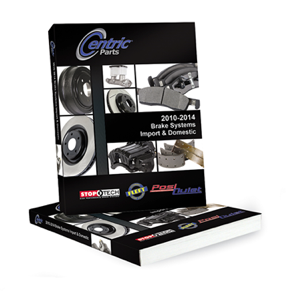 INDUSTRY, Calif. – Centric Parts has released the latest addition to its award-winning library of brake system catalogs – the Centric Parts 2014 Brake Systems Catalog (2010-2014). This up-to-the-minute catalog details Centric’s complete range of brake, wheel bearing, hub and seal components for passenger car and light truck applications from 2010 through 2014.
INDUSTRY, Calif. – Centric Parts has released the latest addition to its award-winning library of brake system catalogs – the Centric Parts 2014 Brake Systems Catalog (2010-2014). This up-to-the-minute catalog details Centric’s complete range of brake, wheel bearing, hub and seal components for passenger car and light truck applications from 2010 through 2014.
Among the many categories of products featured in this latest catalog are Centric’s High Carbon Alloy 125-series rotors, PosiQuiet and Fleet Performance brake pads with hardware included, PosiQuiet Loaded calipers, StopTech high-performance rotors, hydraulics and more.
“We pride ourselves on having one of the best programs for sourcing, identifying and cataloging new brake components,” said Centric Parts President Dan Lelchuk. “That is why Centric continually leads the market in having the most up-to-date product offerings for our customers – and why our catalogs continue to win awards in the industry. This 2014 catalog follows that tradition and keeps us one step ahead of the competition.”
The printed Centric Parts 2014 Brake Systems catalog is being made available to customers today. Centric says the online catalog will be fully updated with these new applications by Nov. 1 and will be released to the e-catalog providers at that time. All of the parts offered in the 2014 Centric Parts Brake Systems catalog are available to order today, according to the company.













